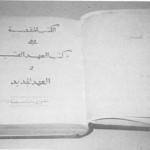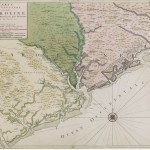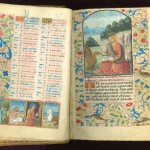Old materials.
The ravages of time and climate cause book spines to break, pages to tear, text and colors to fade. Items basically deteriorate, and no longer look as they did originally, nor are they in the same physical condition. In order to keep valuable older materials available for future generations, specialists in the areas of preservation and conservation are called in.
The choice of preservation versus conservation depends on the item itself and its intended use. Preservation refers to “preserving a book without actually tampering with its structure.” (From John Carter’s ABC for Book Collectors. Oak Knoll Press, New Castle, Delaware, 1995. p.166.) In other words, caring for the materials by preventing access to direct sunlight, maintaining a temperature of no more than 65 degrees farenheit and 50-60% relative humidity, and keeping air circulating to deter decay. It may also include having special cases or boxes created to house the valuable materials.
Conservation or restoration is more time consuming (and obviously more expensive) and is done to bring the item —as much as possible— to its original state. It may include using parts of the original spine and endpapers to repair damage, re-sewing bindings, repairing torn pages with Japanese paper, ironing creased pages, filling wormholes, patching margins, removing mold, removing tapes and residues, de-acidifying pages, retoring leather or vellum covers, and washing pages to remove dirt and stains and brighten time-dulled colors. Obviously not a job for an amateur! In the electronic age, preservation also includes creating digital images of the original items so that researchers and scholars can use those images, at least in part, and minimize repeated handling of the original items.
We are indebted to both Nick Graham and the staff of the North Carolina Digital Heritage Center in Chapel Hill for their digitization of the maps in our Cumming Map Collection, and to Etherington Conservation Services in Browns Summit, NC for the physical conservation of the Arabic Bible of Omar Ibn Sayyid, and for the physical and digital conservation of the Bullard Book of Hours.
- Omar’s Bible: After Conservation
- Omar’s Bible: Before Conservation
- Omar’s Bible: Before Conservation
- Sanson 1696 Carolina
- Collett 1770 NC
- Book of Hours: After conservation
- Book of Hours: Before conservation
- Book of Hours: After conservation




Speak Your Mind